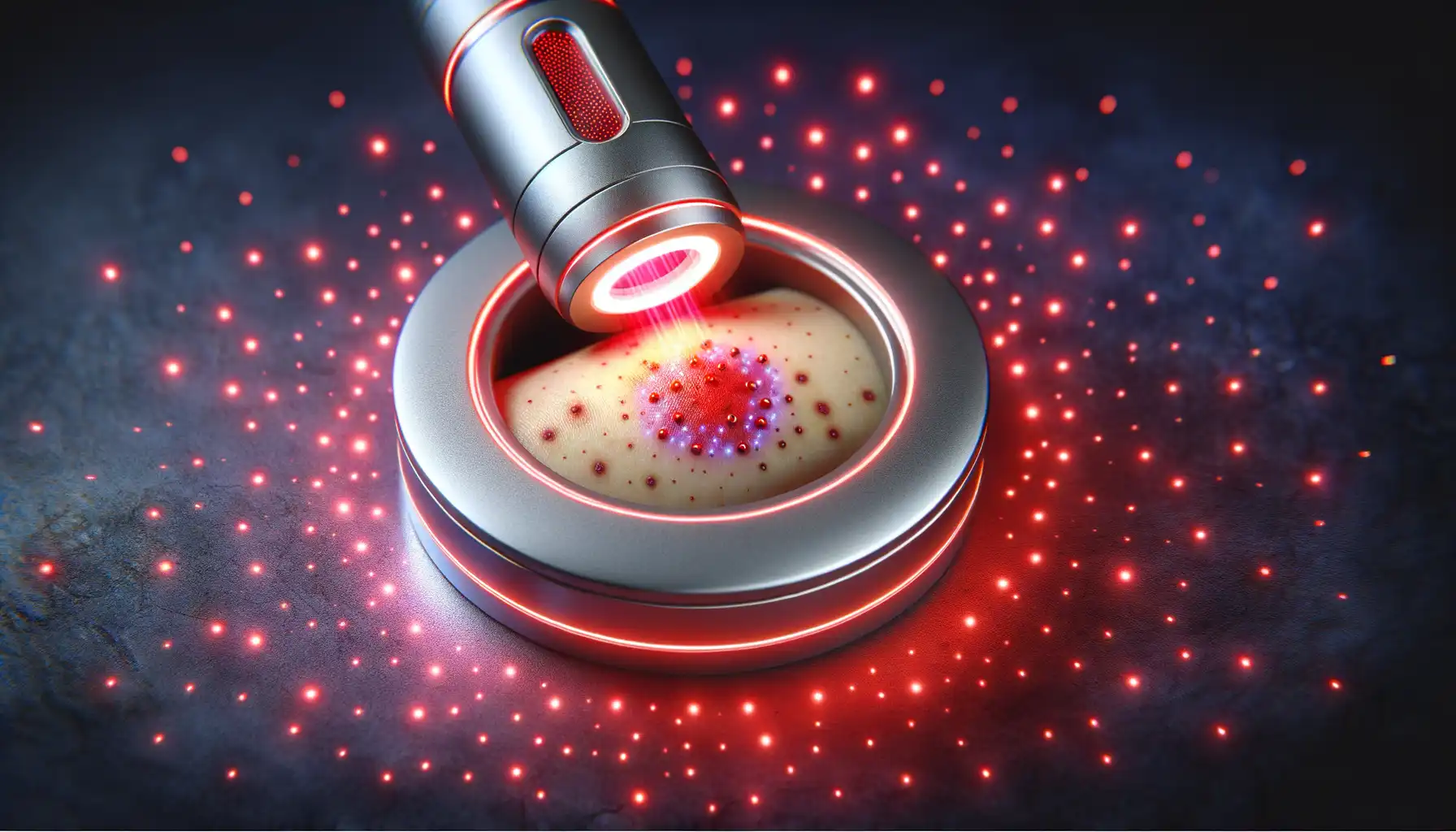Key Takeaways
Pain Reduction: infrared saunas may help reduce chronic pain by improving circulation and easing muscle stiffness.
Improved Sleep: The deep relaxation from a sauna session can contribute to better sleep quality, a common issue for those with fibromyalgia.
Stress Relief: The gentle heat helps calm the nervous system, potentially lowering stress and fatigue levels.
Gentle Heat: Unlike traditional saunas, infrared heat warms the body directly, offering a more comfortable experience at lower temperatures.
Understanding Fibromyalgia and Its Challenges
Fibromyalgia is a complex chronic condition characterized by widespread musculoskeletal pain, accompanied by fatigue, sleep disturbances, memory issues, and mood swings. According to the Centers for Disease Control and Prevention (CDC), it affects about 4 million adults in the United States, or about 2% of the adult population.
The exact cause of fibromyalgia is unknown, but it's believed to involve a process called central sensitization. This means your brain and spinal cord process pain signals differently, amplifying painful sensations. It's as if the volume knob for pain is turned up high. As a result, people with fibromyalgia often experience pain from stimuli that others would not find painful.
Managing these symptoms often requires a multi-faceted approach, combining medication, lifestyle changes, and complementary therapies. This is where options like infrared saunas come into the picture, offering a non-invasive way to potentially manage symptoms.
What Is Infrared Sauna Therapy?
When you think of a sauna, you might picture a sweltering, steam-filled room. That's a traditional Finnish sauna, which heats the air around you to very high temperatures. An infrared sauna works differently.
Instead of heating the air, infrared saunas use special lamps to generate infrared light. This light penetrates your skin and warms your body directly from the inside out. Because it’s more efficient at heating you, it operates at a lower, more comfortable temperature—typically between 120-150°F (49-65°C), compared to the 180-220°F (82-104°C) of traditional saunas. This makes the experience more tolerable for many people, especially those sensitive to high heat.
Infrared Sauna Therapy for Fibromyalgia: How It May Help
The gentle, deep-penetrating heat of an infrared sauna can create a cascade of positive effects in the body. For someone with fibromyalgia, these effects target some of the most persistent and frustrating symptoms. Let's break down the potential benefits.
Soothing Chronic Pain and Muscle Stiffness
Widespread pain is the hallmark symptom of fibromyalgia. Infrared heat may offer a path to natural fibromyalgia pain relief through several mechanisms.
Increased Circulation: The heat causes your blood vessels to dilate, or widen. This boosts blood flow throughout your body. Improved circulation delivers more oxygen-rich blood to sore muscles and joints, which can help reduce pain and inflammation. Think of it as giving your aching tissues the resources they need to start feeling better.
Reduced Muscle Tension: Heat is a well-known muscle relaxant. The deep-penetrating warmth from an infrared sauna can help release tight, knotted muscles and ease the stiffness that often accompanies fibromyalgia pain. This can lead to improved flexibility and greater comfort.
One small-scale study found that patients with chronic pain, including some with fibromyalgia, reported a nearly 50% reduction in their pain levels after a series of infrared sauna sessions. While more extensive research is needed, this early evidence is promising.
Calming an Overactive Nervous System
Many experts believe fibromyalgia involves a dysregulation of the autonomic nervous system (ANS). The ANS controls your "fight-or-flight" (sympathetic) and "rest-and-digest" (parasympathetic) responses. In people with fibromyalgia, the "fight-or-flight" response can be stuck in the "on" position, leading to constant tension, anxiety, and heightened pain perception.
Infrared sauna therapy can help promote a shift toward the "rest-and-digest" state. The enveloping warmth is deeply relaxing, helping to lower cortisol levels (the primary stress hormone) and calm the nervous system. This gentle reset can help dial down the body's overactive pain response and create a sense of calm.
Improving Sleep Quality
Poor sleep is a vicious cycle in fibromyalgia. Pain makes it hard to sleep, and a lack of restorative sleep makes pain worse. Breaking this cycle is crucial for managing the condition.
Infrared saunas may help improve sleep in a couple of ways:
Deep Relaxation: As mentioned, the sauna's heat helps calm your body and mind, making it easier to fall asleep.
Body Temperature Regulation: Your body temperature naturally drops in the evening to prepare for sleep. A sauna session raises your core body temperature. After you leave the sauna, your body starts to cool down, which can trigger the natural sleep-inducing response.
A study published in PubMed Central explored the effects of thermal therapy on chronic fatigue syndrome, a condition with significant symptom overlap with fibromyalgia, and noted improvements in fatigue and mood. While not a direct study on fibromyalgia and sleep, the connection between thermal therapy, relaxation, and symptom reduction is relevant.
Aiding the Body's Natural Detox Pathways
While "detox" is often a buzzword, your body has a very real and effective detoxification system that includes your liver, kidneys, and skin. Sweating is one of the primary ways your body expels certain toxins.
Because infrared saunas induce a deep, profuse sweat, they can support this natural process. Some research suggests that sweat from an infrared sauna may contain more heavy metals and other environmental toxins than sweat produced during traditional exercise. By helping your body flush out these substances, you may be able to reduce the overall burden on your system, which could potentially help ease fibromyalgia symptoms.
How to Safely Use an Infrared Sauna for Fibromyalgia
If you’re considering trying infrared sauna therapy, it's important to approach it with care. Here are some tips to get started safely:
Start Low and Go Slow: Begin with shorter sessions (10-15 minutes) at a lower temperature. See how your body responds. You can gradually increase the duration and temperature as you feel more comfortable.
Hydrate, Hydrate, Hydrate: Drink plenty of water before, during, and after your session. Sweating causes fluid loss, and dehydration can worsen fibromyalgia symptoms. Consider adding an electrolyte powder to your water to replenish lost minerals.
Listen to Your Body: This is the most important rule. If you start to feel dizzy, lightheaded, or unwell, end your session immediately. Fibromyalgia can make you more sensitive, so pay close attention to your body's signals.
Create a Relaxing Ritual: Make your sauna time a true sanctuary. Listen to calming music, practice deep breathing, or simply enjoy the quiet warmth. The goal is to relax your mind as well as your body.
Consistency Is Key: The benefits of infrared sauna therapy often build over time. Try to incorporate it into your routine 2-3 times per week, if possible, to see the best results.
Is It Right for Everyone? A Word of Caution
While generally considered safe, infrared saunas are not for everyone. As with any new therapy, it is essential to speak with a healthcare professional before you begin, especially if you have:
Heart conditions
Low blood pressure
Kidney disease
Any condition that affects your ability to sweat
Your doctor can help you understand if infrared sauna therapy is a safe and appropriate choice for your specific health situation. This article is for informational purposes only and does not constitute medical advice. A resource from the National Center for Complementary and Integrative Health offers a great overview of different approaches to managing fibromyalgia.
Conclusion
Managing fibromyalgia requires a toolbox of strategies that work for you. Infrared sauna therapy for fibromyalgia offers a promising, non-invasive option for finding relief from chronic pain, improving sleep, and reducing the stress that so often accompanies this condition. By providing gentle, deep-penetrating heat, it can help calm an overactive nervous system, boost circulation, and promote a profound sense of relaxation.
If you're looking for a natural way to support your body and mind, exploring infrared sauna therapy could be a valuable step on your wellness journey. Always remember to consult with your healthcare provider to ensure it's a safe choice for you, and then embrace the gentle warmth as a powerful tool for self-care.



